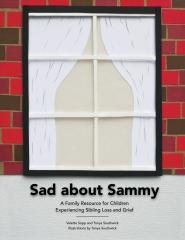Still a Mom
Grief and deep sorrow struck my family with hurricane force the day my beautiful daughter died. Reeling from shock and in disbelief, we picked through the wet, rotting debris of our wrecked lives, searching for the familiar. Not one element of my family’s existence remained untouched in the aftermath of this formidable storm. Our devastation felt cruel, complete and permanent. For us time would forever be marked as ‘before’ or ‘after’ Stephanie’s death.
Surrounded by loving people who offered kind words, thoughtful gifts and practical help, we leaned heavily on our supporters as we limped through those first days. Each act of kindness provided a moment of refuge from despair. But to our surprise, many of our friends who just didn't know what to say to us avoided contact with us. We also faced unexpected heartbreak that others could not buffer. My entire body crumbled when I saw grief’s agonized expression on my husband’s face; and at the moment my eyes first glimpsed that tiny white casket; and again as I watched my tough-guy dad uncharacteristically run to embrace me at the cemetery on the day we buried her.
I also witnessed my frightened young son struggle to understand the anguish that suddenly engulfed his family. He asked for answers, yet clapped tiny hands over his ears and closed his eyes in retreat from my first attempts to try to explain the inexplicable. Watching him, I felt new fractures rend my freshly shattered heart. Somehow I needed to be a good parent for him. He needed reassurance that everything would be okay. He needed clear, simple explanations. He needed understanding and patience. And I needed to find a way to come up with it. I was still his mom.
A few days went by before my son allowed me to read a small book to him. I choked painfully honest words past the boulder- sized lump in my throat as we nestled together on the couch. When I spoke the word ‘dead’ as I read aloud, it felt heartless, detached and somewhat disturbing. After all, I was talking about my child. But my son needed those frank words. In a strange way I think I did too. Throughout the following months, my son would bring that little book to me – over and over again- to read together, and we began to find comfort in each other. Other times I found him hiding behind a chair or under a table quietly pondering the book’s colorless pages.
No parent can truly prepare for realities they will face when they lose a child. But I certainly would have benefited from more assistance when it came to the early days of our family’s grief. It was much later that I read and began to digest the information I found in sibling grief pamphlets we received from our hospital.
How I wish there could be a ‘how-to’ list for families to checkmark their way through the often lengthy and arduous stages of grief, but individual family dynamics and complexities create uniquely individual courses. Personally, I tried many ways to cope. Some attempts were productive, others were not. Some efforts, like exercising or whole-heartedly diving into a project, produced a quick temporary lift. Honestly, I think I painted everything in and around our house that stood still long enough for me to do so!
There was one thing I did that proved beneficial, not only for those first months, but to this day. At the beginning of this journey, our wise pastor encouraged me not to waste the pain, and this advice stuck like glue. The deal was that I had to go through this thing one way or another. I determined that my daughter’s brief life, her suffering; our suffering would not be in vain. It simply could not be. I am still her mom and will always be. I discovered that when I offer comfort or practical help to someone who faces the same unbearable heartache, my soul is comforted too, and it honors the life of my daughter.
With this awareness, I resolved to create a first response resource for families experiencing sibling loss and grief. My dearest friend Valette (a child development expert) and I designed a unique book format that speaks to the early needs of families, carefully remaining neutral with regard to race, religion, age, gender and cause of death. Each element is constructed to simultaneously offer direct language, practical tips and brief insights for parents; and colorful, emotionally accessible, richly symbolic illustrations for children. The illustrated seasons, which are seen from the home’s interior, change side by side with the represented family’s emotions, quietly and effectively conveying messages of hope and healing.
My heart’s desire is to extend a gentle and experienced hand to newly bereaved families in order to help steady each member as they find their sense of balance within their new normal. After all, I’m still a mom and that’s what moms do.
Article Images





Comments